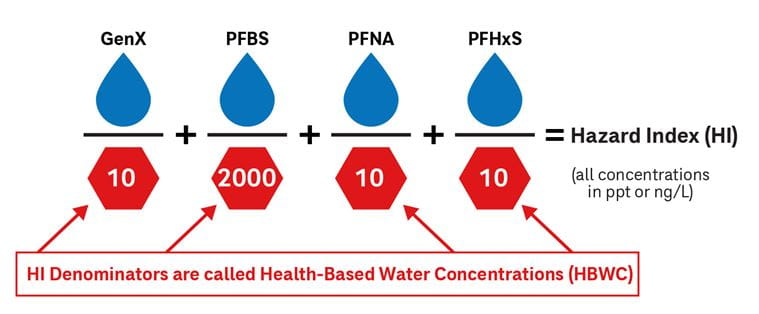Final PFAS Regulations: Keys to Compliance
Over the next five years, utilities will be required to achieve compliance with the new Maximum Contaminant Levels (MCLs). For the first three years, utilities must complete initial monitoring for the targeted compounds. Public water systems that find amounts of the targeted PFAS in amounts over the MCLs must take action and implement solutions that reduce PFAS in drinking water by 2029.

Beginning in 2027, Water systems must start routine monitoring of the six targeted PFAS (PFOS, PFOA, PFNA, PFBS, PFHxS, and GenX) and provide the public with information on the PFAS levels in their Annual Consumer Confidence Reports. Compliance with the regulations must be met by 2029.
In this final rule, EPA has set limits for five individual PFAS: PFOA, PFOS, PFNA, PFHxS, and GenX (HFPO-DA). EPA has also set a hazard index level, designed to account for multiple exposures if two or more of the following are present as a mixture: PFNA, PFHxS, HFPO-DA, and PFBS.

The final values have only changed slightly since draft figures were released a year ago. Limits for PFOA and PFOS remain unchanged at 4.0 parts-per-trillion (ppt), but the latest announcement assigned the limit of 10 ppt each for PFNA, PFHxS, and GenX. The previously introduced hazard index remains for mixtures containing at least two of the same four compounds (GenX, PFBS, PFNA, and PFHxS). However, in the final rule, new significant figure requirements impact the allowable levels before exceeding the MCLs as shown in the examples above. A new reduced monitoring tier was added to the final rule to allow annual sampling (see more information in the factsheet on monitoring requirements).
"[The PFOA and PFOS MCLs of 4.0 ppt] remain the most challenging provisions for many water systems to comply with," says Mark White, CDM Smith Drinking Water practice leader. "These are near the current U.S. practical quantification levels for these PFAS, and sampling water to assess the concentrations at these low concentrations requires strict adherence to sampling protocols."
Hazard Index

“There will likely be a lot of public concern over the numbers coming out of this proposed rule,” says CDM Smith PFAS and toxicology expert Heather Lanza. Lanza believes that community engagement and talking with stakeholders is critical to help allay public concerns and address the complexities around understanding, monitoring and treating PFAS.
Best Available Technologies (BATs)
The final rule lists granular activated carbon (GAC), anion-exchange resin (AIX), reverse osmosis (RO), and nanofiltration (NF) as best available technologies (BATs). These technologies can remove PFAS in water to below the proposed limits, but the identified BATs also have challenges. The performance of sorption BATs (GAC and AIX) is highly dependent on the site-specific water chemistry with co-contaminants (e.g., organics, metals) and the low PFAS regulatory limits significantly affecting media usage rates. Site-specific bench and pilot studies are needed to select the most appropriate approach and design cost-effective systems to meet treatment objectives.
In addition, disposal of spent media is becoming increasingly difficult as traditional options (e.g., landfilling) is becoming more restrictive for PFAS-impacted waste. Ongoing work is being done to develop approaches that can cost-effectively remove and destroy PFAS, providing a permanent solution. Technologies for sampling, removing and destroying PFAS are constantly evolving.
For immediate and comprehensive compliance support, the CDM Smith team of PFAS experts is available and ready to help.











